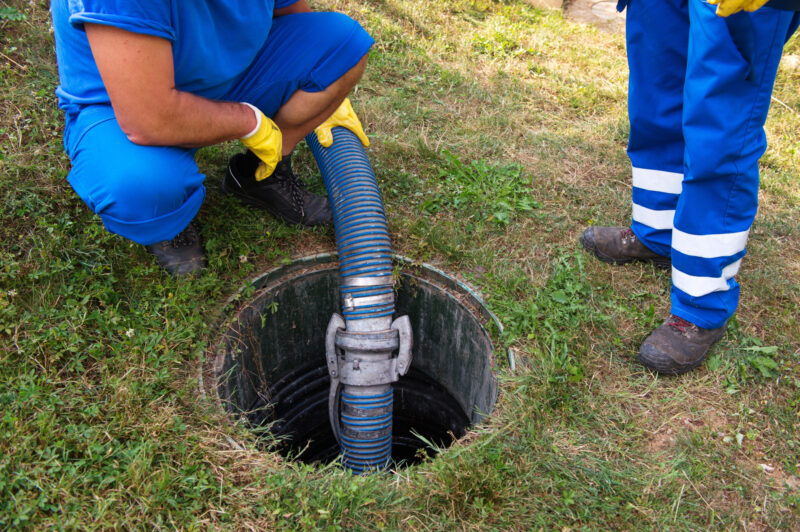Are you planning on building a home outside of the city? In that case, you may need to add one more thing to your home building lists.
Like living in the city, making a home in the countryside also has benefits and challenges. Some of these obstacles may need more consideration than others. One example is handling the waste treatment from your home.
Few suburban homes get connected to municipal sewer lines like many city homes. They do this because paying for extending sewer pipes is more expensive. Building a septic tank on your own is a better option.
These helpful treatment tanks manage your wastewater but often get misunderstood. They can also add a bit more to your home’s value.
Need help building a septic tank for your home? Check this article out to know the three biggest things to consider when constructing one.
1.Costs
One of the most important considerations when building a septic tank is its cost. These costs aren’t only for its installation but also for other expenses you may need to pay. The price of a septic tank can also vary because of its type and size if you plan on making a DIY septic tank.
Some states also have rules about your wastewater tanks. These rules include permit and inspection fees before installation.
Here are some of the factors that affect the cost of a septic tank
House Size
The size of your home is a huge factor when considering the size of your septic tank. It should handle the amount of water and waste your household will produce. For instance, a home for a family of five may need a tank that can hold up to a thousand gallons of wastewater.
Tank Gallon Capacity
Standard-sized septic tanks can support and manage one or two-bedroom houses. Bigger homes or small buildings can use up a septic tank that holds over 3,000 gallons.
The bigger and deeper your tank is, the more expensive it will be. The price of these tanks can still vary depending on what kind they are. Not to mention, there are also the professional fees that will install it for you.
DIY septic tanks will also have to follow the state’s rulings on septic tank sizes. You must check the state regulations to avoid overspending on your tank.
Permits and Tank Removal:
In installing a septic tank system, getting some permits is also necessary. Apart from that, you also need to have your soil and property tested and prepared. For other reasons, it’s also possible that you’ll be paying for tank removal.
You can get your local permits after your soil and tank system have been approved. Keep in mind that more intricate construction will need a building permit.
2.Maintenance
A septic tank is a necessary addition to home building checklists. When building a septic system, you also need to consider the tank’s future maintenance.
A septic tank system consists of a tank and a leach field connected by a series of pipes. With good septic tank maintenance, your septic system can last up to four decades. Your leach field or drain field can last over half a century if your system is well-maintained.
Well-kept septic tanks can provide your home with long-lasting and good wastewater treatment. To help you maintain your DIY septic tank, here are some of the things you need to remember:
Regular Septic Pumping
Once you have finished building a septic tank, you have to arrange for the pumping of your tank. Doing this once every two to five years is enough. However, you have to consider the size of your tank, your home, and the type of waste.
Leak Inspection
Walk around your septic system and inspect the areas where the grass is denser. A leaking tank offers more nutrition for plant life and sewage smells. After you pump your tank, let your technician check for any leaks.
Mark off and maintain the leach field.
Always remember that the leach field needs protection. Leach fields have a lot of perforated pipes that extend far. You can walk on these pipes without any problems. But semi-permanent structures and cars can damage these buried pipes.
To prevent this, mark off your leach field. You can also inform other people that those areas don’t support heavy loads.
Keep a check on the plant life and drainage near the leach field. Check that the water from your home flows away from it to avoid flooding it. You also need to remove the trees, bushes, and shrubs so that their roots will not grow into the pipes.
3.Terrain and soil types
The terrain or landscape is crucial in building your septic tank system. The landscape can determine how the sewer will handle flooding and runoff water.
Flat terrain is best for your septic system. Flat surfaces ensure that your drain field functions well. That way, there’s proper disposal of treated water into the surrounding environment.
Ensure that the area is nowhere near trees, plants, and other buildings. Structural foundations and roots can damage your septic tank and its sewer lines.
Not only that, but your septic tank system must also be easy to access. Professionals can check it faster if there are any malfunctions or repairs needed.
The type of soil in the terrain is also essential. Soil types that are too dense may not allow the sewage to pass through. When that happens, blockages in your drainage system will occur often.
Your chosen septic system company can help analyse the permeability of the location. By doing that, it’ll be easier for them to see if it’s okay to proceed with the installation.
Other states will also require you to take a soil permeability test. Once your soil passes, you can get the permit and prepare the location.
Landscape preparation is necessary when you’re installing a septic tank. It also helps in utilising the services of a septic tank installation company.
Start Building a Septic Tank Today!
Building a septic tank is no easy feat. You’ll need to consider all the costs, maintenance, and location. In doing so, you’ll ensure that your septic system works well and will last for a while.
Keeping this in mind, you won’t overspend and will stay within your budget. By doing this, your home’s value will also increase.
Did you find this article relevant? Check our other blog posts. We have more content for business, lifestyle, and technology.









